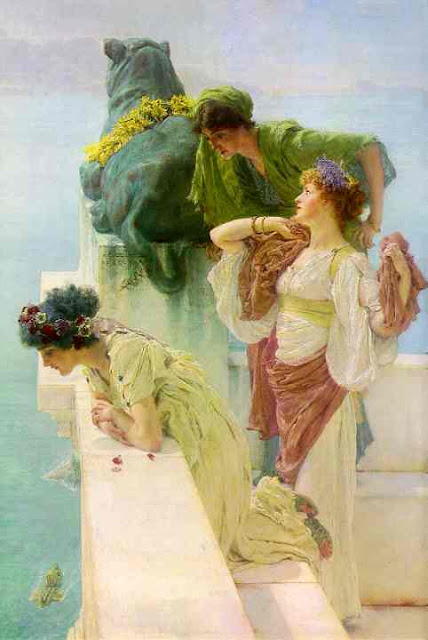

It would have been unusual for such a drawing to move so quickly in 1879 from the dealer (Pilgeram and Lefevre) to a major client like Vanderbilt while the print had not been published yet. However, in the same year, it was in the Vanderbilt collection, so we are inclined to propose an earlier date. Swanson, suggested that this sheet is a version possibly designed by Alma-Tadema in 1879 to help Leopold Löwenstam engrave his composition. The author of the catalogue raisonné, Vern G. The watercolor of the same subject, Autumn, dating from 1874, is in the collection of the Walker Art Gallery in Liverpool, and now showed in every exhibition about the artist. The first painting, A Halt (1872), an oil panel commissioned by Ernest Gambart was destroyed in a fire in 1873. Today, The Women of Amphissa is part of the private collection of the Sterling and Francine Clark Art Institute.Designed by the painter Sir Lawrence Alma-Tadema, this wonderful and very impressive sheet is a very rare survival version of one of his most famous composition that he executed in a painting and a watercolor after 1872.

In the 1960s, however, his body of work was re-examined and deemed very significant for art history and in particular English art of the nineteenth century. It has also come to represent the strength of femininity and the importance of protection because the women of the city would have stood up to soldiers if necessary.Īfter his death in 1912, Alma-Tadema's work was held in low esteem by the public despite his success during his life. Many interpret this painting as a lesson in charity and humanity for the Victorian people of Alma-Tadema's time as this was an era with lots of poverty, child labour and morality standards. It is reported that Alma-Tadema used his second wife, Laura, as a model for this painting. Alma-Tadema also uses a lot of white and varying shades likely representative of the peace between these groups. From the hair and clothing of the women, to the flowers and sculptures in the wall, the details create the beauty of this painting.

While The Women of Amphissa is both ethereal and dream-like, it is also very realistic as the details created by Alma-Tadema make the painting come to life.

As seen in this painting, the women of Amphissa also provided them with food and care the next morning. Despite these two cities being at war, the women of Amphissa allowed the women from Phocis to fall asleep in their marketplace and stood guard throughout the night to ensure the men of the city caused them no harm. This celebration caused a group of women to wander into the city of Amphissa from Phocis. 20 Best Women History Books of All Time - Women's Day Special


 0 kommentar(er)
0 kommentar(er)
